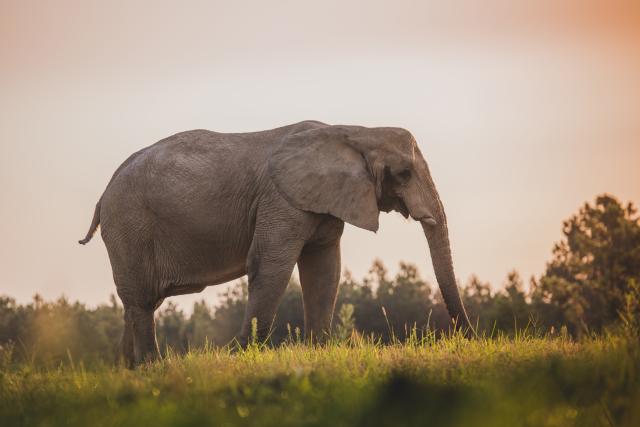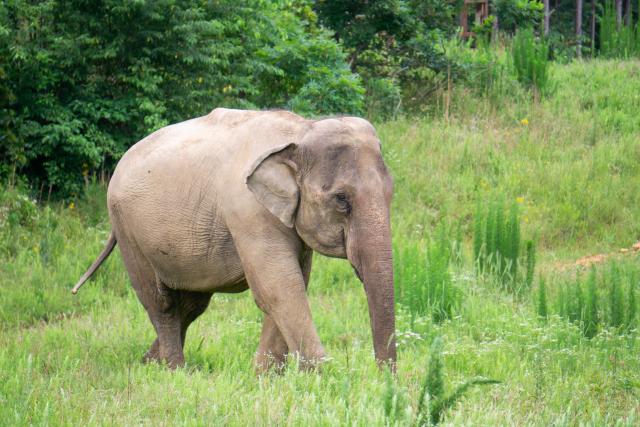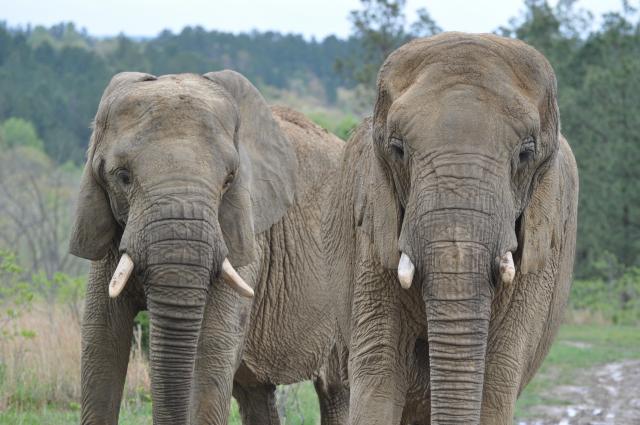Artie (Aardvark) is a male African savanna elephant born in the wilds of Zimbabwe in 19... Learn More

Artie (Aardvark) is a male African savanna elephant born in the wilds of Zimbabwe in 19... Learn More

Born in the wilds of Africa in 1983, Edie was captured and relocated to the United Stat... Learn More

Flora was born in 1982 in the wilds of Zimbabwe, Africa. She was orphaned at age two an... Learn More

Mikki was born in the wilds of Zimbabwe, Africa in 1985. Following government-led culli... Learn More

Nosey was born in Zimbabwe in 1982. She was captured from the wild in 1984 and brought... Learn More

Osh was born in captivity at Howletts Wild Animal Park in Littlebourne, England in 1994... Learn More

Sukari was born wild in Zimbabwe in 1984 and imported to the United States in 1985. Upo... Learn More

Tange was born in the wilds of Africa in 1973 and then captured and imported with other... Learn More

Billie was born in India in 1962. Like most Asian elephants arriving in the United Stat... Learn More

Debbie was wild born in Asia in 1971, captured at a young age, and sent to the United S... Learn More

Punch was born in the wilds of Thailand, likely around 1970. That same year, she was ca... Learn More

Ronnie was born wild in Asia in 1966. Like so many other circus elephants, she was capt... Learn More

Captured in Thailand as a calf, Sissy first appeared in the United States on exhibit at... Learn More
Elephants are the only remaining members of the Proboscidea order of mammals. The order included the extinct wooly mammoth and American mastodon.
Elephants are a “keystone species.” If a keystone species disappears through extinction or removal, the entire ecosystem would change drastically. Other species rely on the keystone species for survival.
Today there are three surviving elephant species:
African savanna elephants (Loxodonta Africana) live in the grasslands of sub-Saharan Africa. African forest elephant (Loxodonta Cyclotis) live in the Congo River Basin in western central Africa.
Among Asian elephants (Elephas Maximus), there are three subspecies: Indian, Sri Lankan, and Sumatran. These are distinguished by physical traits related to their geographic location.
In the wild, elephants are migratory, walking miles each day. They form intricate family structures and grieve for their dead in a more-than-instinctive way. They show humor and express compassion.
There are several anatomical and behavioral differences between African and Asian elephants.
Ears
Body
Tusks
Trunk
Hands-on self-guided exhibits and educational programming that explore the many ways elephants shape our world.
Learn MoreLive, on-demand, and asynchronous content. Our programs are fun, educational, and cater to all ages.
Learn MoreWe use a system of solar-powered cameras to locate and monitor the elephants and to offer you, our friends and supporters, frequent glimpses of the elephants we are so fortunate to have in our care.
Watch Now



